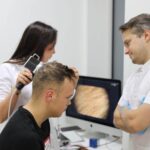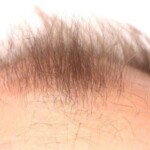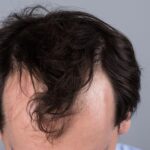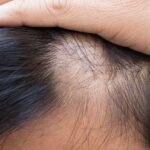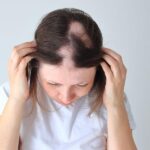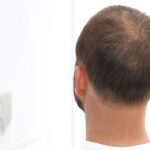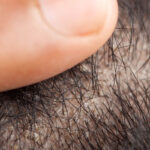Hair loss can have different causes, and its nature depends, among other things, on the phase of the hair growth cycle in which the disturbance occurs. The two most commonly diagnosed types are anagen effluvium and telogen effluvium. Although for the patient both mean hair loss, their mechanisms and treatments differ fundamentally. In this article, we explain what exactly anagen effluvium is, how to distinguish it from telogen effluvium, and what can be done to treat it.
What is anagen effluvium?
Anagen effluvium is the sudden loss of hair in the growth phase (anagen). In practice, this means that hair follicles, which should be actively producing hair, are suddenly damaged. As a result, hair falls out very quickly – often within just a few days of exposure to the harmful factor. A typical symptom is soft, non-frayed, thin hair that falls out easily in handfuls, without prior thinning.
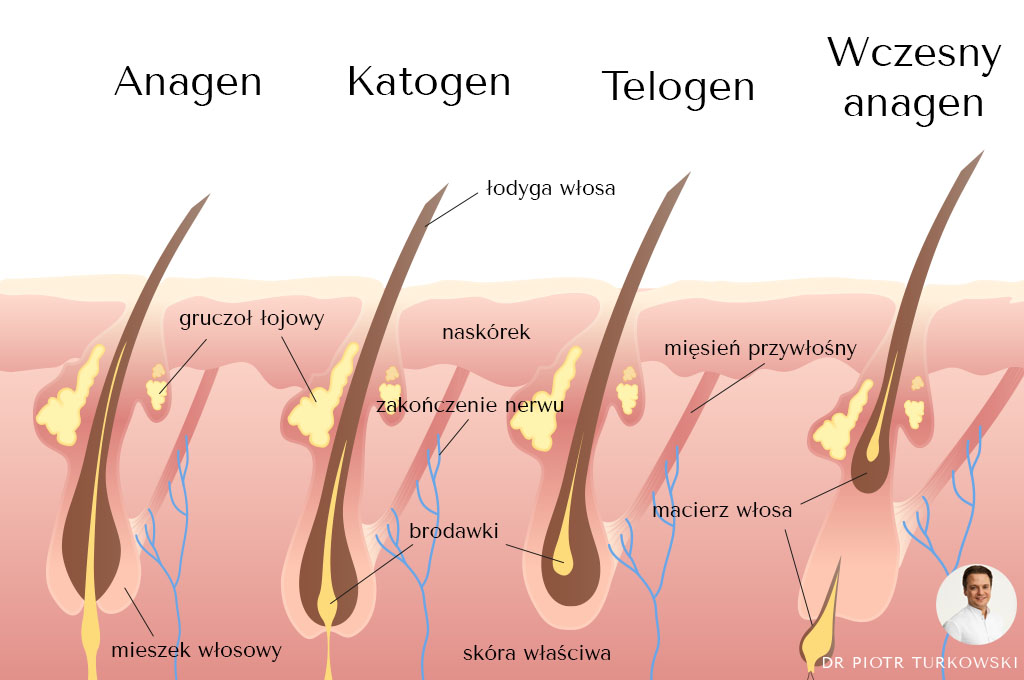
Telogen effluvium – the most common form of hair loss
In contrast, telogen effluvium occurs when hair transitions from the growth phase to the resting phase (telogen). Hair stops growing and falls out within 2–3 months. This process is slower, less dramatic, and often associated with stress, hormonal changes, iron deficiency, eating disorders, or pregnancy. Hair sheds evenly but does not appear visibly damaged.
Read more: Telogen effluvium – causes, symptoms, treatment
Comparison of anagen and telogen effluvium – table
| Features | Anagen effluvium | Telogen effluvium |
|---|---|---|
| Hair phase | Growth (anagen) | Rest (telogen) |
| Onset of shedding | Sudden, within days | Gradual, after 2–3 months |
| Causes | Toxins, chemotherapy | Stress, deficiencies, hormones |
| Reversibility | Often reversible | Often reversible |
| Typical hair | Soft, deformed | With a bulb |
What causes anagen effluvium?
The causes of anagen effluvium are linked to sudden, severe damage to hair follicles in the active growth phase. This means that the body experiences a biological or chemical shock that disrupts the intense process of hair production, causing premature shedding. One of the most common causes of this type of hair loss is chemotherapy – the cytotoxic drugs used affect not only cancer cells but also rapidly dividing hair follicle cells, leading to sudden hair loss across the scalp, and often also the eyebrows, eyelashes, and body.
A similar effect may also be caused by other toxic substances, such as heavy metals – for example, thallium or arsenic – which enter the body and disrupt metabolic processes in the hair roots. Anagen effluvium may also occur as a result of acute poisoning, severe systemic infection, radiation, or contact with aggressive chemicals used in industry.
Autoimmune factors are also significant – in some cases, the immune system begins attacking its own hair follicles, treating them as a threat, which can damage them during the anagen phase. Hair loss can also occur with certain immunosuppressive or antiviral drugs, as well as in systemic diseases that reduce the body’s ability to regenerate and maintain normal hair structure.
Unlike telogen effluvium, where hormonal imbalances, stress, or nutritional deficiencies play the main role, in anagen effluvium, there is direct physical or biochemical damage to the structures responsible for hair growth. This is why its course is usually sudden, intense, and unpredictable without a detailed patient history and knowledge of the factors involved.
How is anagen effluvium diagnosed?
Diagnosing anagen effluvium requires a thorough clinical assessment and detailed medical history, as it is important to determine the timing and type of factor that led to sudden hair loss. The doctor begins by asking about recent cancer treatments, infections, medications, exposure to toxic substances, as well as chronic or autoimmune diseases. At this stage, anagen effluvium is often suspected, especially if the patient noticed rapid, almost immediate shedding after starting therapy or experiencing a severe systemic burden.
The next step is physical and trichological examination. The doctor performs a so-called hair pull test, which involves gently pulling a small group of hairs – if many hairs come out, this may indicate active disease. In anagen effluvium, the shed hairs have a characteristic appearance: they are long, lack bulbs with sheaths, and have distinctly deformed ends, distinguishing them from telogen hairs.
Also very useful is trichoscopy, a digital scalp and follicle analysis using a dermatoscope. In anagen effluvium, trichoscopy reveals thinning hair, absence of the miniaturization typical of androgenetic alopecia, and the presence of short, deformed, or broken anagen hairs. Microscopic analysis of plucked hairs (a trichogram) can also be helpful, showing the proportion of hairs in different phases – in anagen effluvium, most are in anagen but are damaged.
Is anagen effluvium reversible?
Yes, anagen effluvium is most often reversible, because it does not cause permanent damage to hair follicles, only temporary inhibition. Once the triggering factor is removed – e.g., after chemotherapy ends, toxins are eliminated, or an infection is cured – hair usually begins to regrow spontaneously within a few weeks to a few months. In some cases, regenerative support with trichological or pharmacological therapies is required.
“In most cases, anagen effluvium does not cause permanent follicle damage. The key is early identification of the cause and supporting regeneration – both internally and externally.”
— Dr Piotr Turkowski, hair transplant specialist
At Piotr Turkowski’s Clinic, we offer full trichological diagnostics and individually tailored therapies to support the treatment of anagen effluvium. We invite you for a consultation, during which we will discuss the best treatment plan for your hair.



